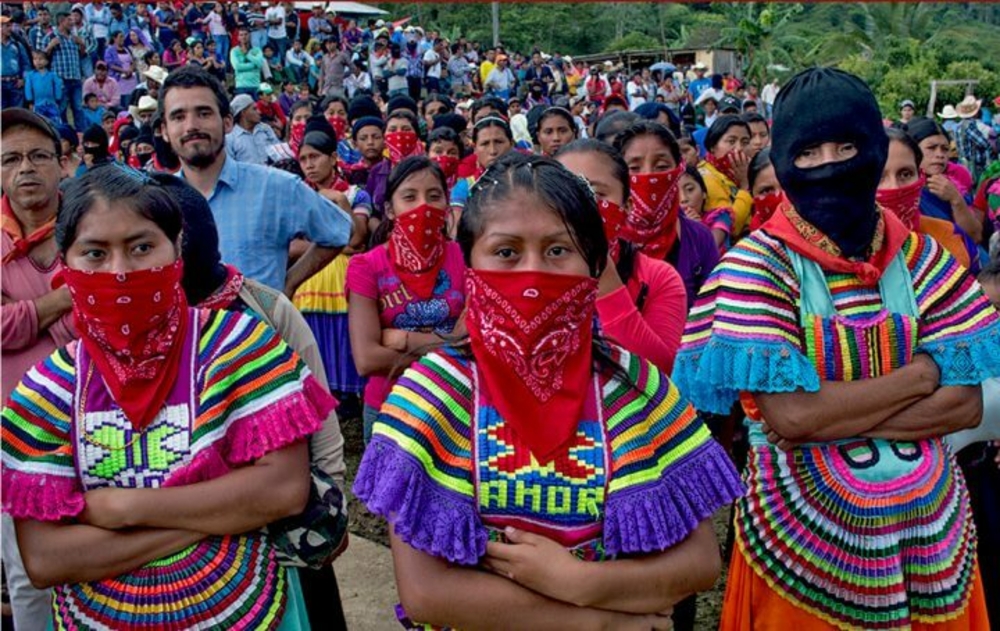At zero hour, NAFTA, the North American Free Trade Agreement, came into force, bringing Mexico into line with its powerful neighbours to the north. As the saying goes, “poor Mexico, so far from God and so close to the United States of America”. And so the small farmers of Central America, including a large proportion of the Indian communities of Chiapas, were condemned to even greater misery, forced into exile and/or employment in the maquiladoras along the border!
At half past midnight, just when everything seemed to be going well for capital, an army of the poor took over the largest towns in Chiapas, including the highly symbolic San Cristobal de las Casas! The Mexican government then had to remember the territory and its inhabitants, try to resolve the issue… and negotiate with the EZLN (Ejército Zapatista de Liberación Nacional)!
AUTONOMY, DEMOCRACY, GOOD GOVERNMENT!
Of course, the government gave in to the temptation of militarism, which led to the deaths of more than 500 people. Except that… taking military action in the Chiapaneco forest to dislodge an invisible enemy, indistinguishable from an indigenous population largely committed to the cause, immediately supported by all the progressive forces in Mexico at the time, surrounded by international solidarity that was only too eager to support these armed revolutionaries in balaclavas, proved to be a challenge beyond the reach of an already fragile government.
So the San Andrès Accords (1996) had to be negotiated. Even if they were never implemented, it was a resounding victory for what became the FZLN, which was able to boldly combine armed appearances, a foothold in the real society of indigenous and non-indigenous people in the poorest areas and political demonstrations of strength in the very heart of the capital.
Then, in the face of government procrastination, military pressure and paramilitary violence, the FZLN decided to implement directly what it could not legislate for. It set up democratic and egalitarian political structures in the areas under its control, which Le Monde diplomatique described in 2017 as “on this scale and for this length of time, the Zapatista adventure is the most important experiment in collective self-government in modern history”.
A DIFFERENT KIND OF GLOBALIZATION, ONE BASED ON STRUGGLE!
If the mantra of the Zapatistas – “Mandar obedeciendo!” (command by obeying) – is still relevant today, if the desire to change the world without taking power persists, the commitment to enlist the support of progressive people from all over the world has never wavered, from the first Intercontinental Meeting for Humanity and Against Neoliberalism in 1996 bringing together 5,000 people from 42 countries, right up to the recent European tour by a Zapatista delegation – present at Notre-Dame-des-Landes among other places – to meet up with the continent’s resistances and rebellions, in order to weave the planetary network of struggles to which the Zapatistas have long been calling “in defence of life”.
04 January 2024
This article was originally published in the French language l’Anticapitaliste. This English translation is from International Viewpoint: https://internationalviewpoint.org/spip.php?article8372 Photo Credit: DR




